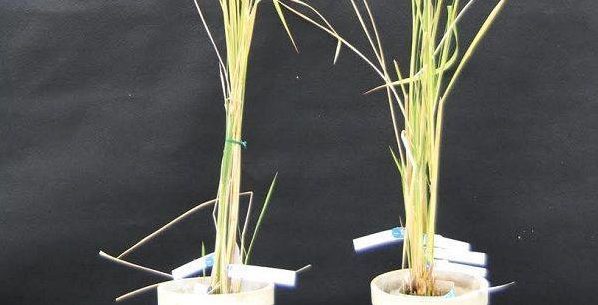Researchers in Japan have edited plant mitochondrial DNA for the first time, which could lead to a more secure food supply.
Nuclear DNA was first edited in the early 1970s, chloroplast DNA was first edited in 1988, and animal mitochondrial DNA was edited in 2008. However, no tool previously successfully edited plant mitochondrial DNA.
Researchers used their technique to create four new lines of rice and three new lines of rapeseed (canola).
“We knew we were successful when we saw that the rice plant was more polite – it had a deep bow,” said Associate Professor Shin-ichi Arimura, joking about how a fertile rice plant bends under the weight of heavy seeds.
Arimura is an expert in plant molecular genetics at the University of Tokyo and led the research team, whose results were published in Nature Plants. Collaborators at Tohoku University and Tamagawa University also contributed to the research.
Genetic diversity for the food supply
Researchers hope to use the technique to address the current lack of mitochondrial genetic diversity in crops, a potentially devastating weak point in our food supply.
In 1970, a fungal infection arrived on Texas corn farms and was exacerbated by a gene in the corn’s mitochondria. All corn on the farms had the same gene, so none were resistant to the infection. Fifteen percent of the entire American corn crop was killed that year. Corn with that specific mitochondrial gene has not been planted since.
“We still have a big risk now because there are so few plant mitochondrial genomes used in the world. I would like to use our ability to manipulate plant mitochondrial DNA to add diversity,” said Arimura.
Plants without pollen
Most farmers do not save seeds from their harvest to replant next year. Hybrid plants, the first-generation offspring of two genetically different parent subspecies, are usually hardier and more productive.
To ensure farmers have fresh, first-generation hybrid seeds each season, agricultural supply companies produce seeds through a separate breeding process using two different parent subspecies. One of those parents is male infertile – it cannot make pollen.
Researchers refer to a common type of plant male infertility as cytoplasmic male sterility (CMS). CMS is a rare but naturally occurring phenomenon caused primarily by genes not in the nucleus of the cells, but rather the mitochondria.
Green beans, beets, carrots, corn, onions, petunia, rapeseed (canola) oil, rice, rye, sorghum, and sunflowers can be grown commercially using parent subspecies with CMS-type male infertility.
Beyond green
Plants use sunlight to produce most of their energy, through photosynthesis in green-pigmented chloroplasts. However, chloroplasts’ fame is overrated, according to Arimura.
“Most of a plant isn’t green, only the leaves above the ground. And many plants don’t have leaves for half the year,” said Arimura.
Plants get a significant portion of their energy through the same “powerhouse of the cell” that produces energy in animal cells: the mitochondria.
“No plant mitochondria, no life,” said Arimura.
Mitochondria contain DNA completely separate from the cell’s main DNA, which is stored in the nucleus. Nuclear DNA is the long double-helix genetic material inherited from both parents. The mitochondrial genome is circular, contains far fewer genes, and is primarily inherited only from mothers.
The animal mitochondrial genome is a relatively small molecule contained in a single circular structure with remarkable conservation between species.
“Even a fish’s mitochondrial genome is similar to a human’s,” said Arimura.
Plant mitochondrial genomes are a different story.
“The plant mitochondrial genome is huge in comparison, the structure is much more complicated, the genes are sometimes duplicated, the gene expression mechanisms are not well-understood, and some mitochondria have no genomes at all – in our previous studies, we observed that they fuse with other mitochondria to exchange protein products and then separate again,” said Arimura.
Manipulating plant mitochondrial DNA
To find a way to manipulate the complex plant mitochondrial genome, Arimura turned to collaborators familiar with the CMS systems in rice and rapeseed (canola). Prior research strongly suggested that in both plants, the cause of CMS was a single, evolutionarily unrelated mitochondrial gene in rice and in rapeseed (canola): clear targets in the perplexing maze of plant mitochondrial genomes.
Arimura‘s team adapted a technique that had previously edited mitochondrial genomes of animal cells growing in a dish. The technique, called mitoTALENs, uses a single protein to locate the mitochondrial genome, cut the DNA at the desired gene, and delete it.
“While deleting most genes creates problems, deleting a CMS gene solves a problem for plants. Without the CMS gene, plants are fertile again,” said Arimura.
The fully fertile four new lines of rice and three new lines of rapeseed (canola) that researchers created are a proof of concept that the mitoTALENs system can successfully manipulate even the complex plant mitochondrial genome.
“This is an important first step for plant mitochondrial research,” said Arimura.
Researchers will study the mitochondrial genes responsible for plant male infertility in more detail and identify potential mutations that could add much-needed diversity.
Read the paper: Nature Plants
Article source: University of Tokyo
Image: Tomohiko Kazama








